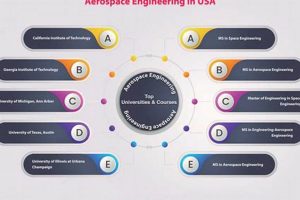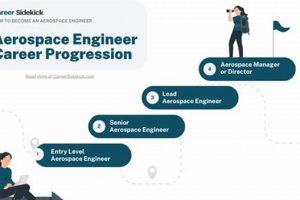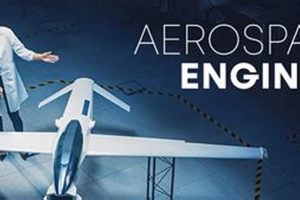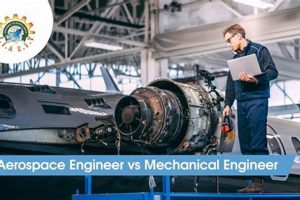The necessity of software development skills within the field of aerospace engineering is a frequent inquiry. Modern aerospace systems are intrinsically linked to software. This connection spans design, simulation, testing, and operation phases. For instance, a flight control system relies on complex algorithms to maintain stability and execute pilot commands. Similarly, computational fluid dynamics (CFD) software enables engineers to model airflow around aircraft, optimizing aerodynamic performance.
Proficiency in programming languages offers significant advantages to aspiring and practicing aerospace engineers. It facilitates the creation of custom tools for data analysis, the automation of repetitive tasks, and the development of sophisticated models. Historically, aerospace relied heavily on manual calculations and physical prototypes. Today, software simulations and code-driven analysis expedite the development cycle, reduce costs, and improve the reliability of aerospace systems. This skill allows engineers to contribute effectively to various projects, from designing efficient aircraft to optimizing satellite trajectories.
Therefore, subsequent sections will delve into specific applications where programming is essential, the relevant programming languages for aerospace engineers, and the career paths where these skills are highly valued. The discussion aims to provide a clearer understanding of the scope and significance of software development knowledge in this domain.
Essential Guidance Regarding Software Expertise in Aerospace Engineering
The following points outline key considerations for aspiring or practicing aerospace engineers regarding the integration of software development skills into their professional development. Addressing the question of software knowledge, these tips offer practical advice.
Tip 1: Prioritize Fundamental Programming Concepts: Focus on mastering core programming principles such as data structures, algorithms, and object-oriented programming. These concepts form the foundation for understanding and utilizing various programming languages effectively.
Tip 2: Develop Proficiency in Industry-Relevant Languages: Acquire expertise in languages commonly used in aerospace, including Python (for data analysis and scripting), MATLAB (for numerical computation and simulation), and C/C++ (for real-time systems and embedded software). Familiarity with FORTRAN remains relevant for legacy code.
Tip 3: Emphasize Simulation and Modeling Skills: Gain hands-on experience with simulation software such as ANSYS, Simulink, or OpenFOAM. Learning to script and automate tasks within these environments significantly enhances productivity.
Tip 4: Cultivate Data Analysis and Visualization Abilities: Aerospace engineering generates vast amounts of data. Develop skills in data manipulation, statistical analysis, and data visualization using tools such as Pandas, NumPy, and Matplotlib (in Python) or similar functionalities in MATLAB.
Tip 5: Seek Opportunities for Practical Application: Participate in projects, internships, or research that involve coding for aerospace applications. This practical experience is invaluable for solidifying theoretical knowledge and developing problem-solving skills.
Tip 6: Understand Embedded Systems Programming: A significant portion of aerospace systems relies on embedded software. Learning to program microcontrollers and working with real-time operating systems (RTOS) is highly beneficial.
Tip 7: Familiarize Oneself with Version Control Systems: Master the use of version control systems like Git. Collaborative coding requires effective management of code changes, and Git is the industry standard for this purpose.
Embracing these guidelines ensures that aerospace engineers are well-equipped to leverage software development tools, enhancing their problem-solving capabilities and enabling them to contribute effectively to cutting-edge projects. The capacity to code provides a distinct advantage in a rapidly evolving technological landscape.
These recommendations offer a strategic approach to incorporating software expertise, leading to a more comprehensive understanding of the integration of programming and aerospace engineering principles.
1. Simulation Development
Simulation development forms a cornerstone of modern aerospace engineering, inextricably linking it to software proficiency. The design and testing of aircraft, spacecraft, and related systems increasingly rely on sophisticated simulations to predict performance, identify potential flaws, and optimize designs before physical prototypes are even constructed. These simulations, ranging from computational fluid dynamics (CFD) models to finite element analysis (FEA) of structural components, demand substantial software engineering expertise. Without the ability to create, modify, and interpret these simulations, progress in aerospace engineering would be significantly hampered.
The practical significance of simulation development in aerospace is evident in numerous examples. For example, designing a new aircraft wing requires extensive CFD simulations to analyze airflow and predict lift and drag characteristics. Similarly, simulations are used to model the stresses and strains on a spacecraft during launch, ensuring structural integrity. In each case, engineers utilize specialized software, often requiring custom code to tailor the simulation to specific design parameters. The ability to program and manipulate these simulations is not merely an advantage, but a fundamental necessity.
In summary, simulation development constitutes a critical component of aerospace engineering. The complex nature of aerospace systems necessitates the use of sophisticated software simulations for design, analysis, and testing. Developing and utilizing these simulations requires robust programming skills and a deep understanding of numerical methods and computational techniques, thus underlining the importance of coding expertise within the aerospace engineering field. Failure to integrate these computational approaches presents a significant barrier to innovation and efficiency.
2. Data Analysis
Data analysis constitutes an indispensable facet of aerospace engineering, intrinsically linked to the activity of writing code. Aerospace projects generate vast quantities of data from simulations, wind tunnel tests, flight tests, and operational systems. Extracting meaningful insights from this data requires specialized software and analytical techniques, directly necessitating competence in computer programming. Without the ability to process, analyze, and visualize this data effectively, engineers cannot validate designs, identify performance bottlenecks, or optimize system parameters. The reliance on data-driven decision-making makes software proficiency a core requirement.
Consider the example of analyzing flight test data for a new aircraft. During flight testing, sensors collect data on airspeed, altitude, engine performance, and structural loads. This raw data, often numbering in the gigabytes, must be processed to identify trends, anomalies, and deviations from predicted performance. Aerospace engineers utilize programming languages such as Python or MATLAB to write scripts that filter, clean, and analyze the data, generating plots and statistical summaries. These analyses inform design modifications, control system refinements, and performance improvements. Similarly, data analysis plays a critical role in monitoring the health and performance of satellites, identifying potential failures, and optimizing resource allocation. In each of these scenarios, coding forms the essential bridge between raw data and actionable insights.
In summary, data analysis in aerospace engineering hinges upon the ability to write and execute code. The volume and complexity of aerospace data necessitate sophisticated analytical techniques and specialized software tools. As such, coding proficiency is no longer a supplementary skill but a fundamental requirement for aerospace engineers involved in design, testing, and operation. The effectiveness of data analysis directly impacts the safety, efficiency, and reliability of aerospace systems, reinforcing the inextricable link between coding expertise and successful engineering outcomes. Ignoring the importance of the integration of programming and data analysis could lead to inefficiencies, errors, and potentially dangerous outcomes.
3. Automation Scripting
Automation scripting, a critical element in modern engineering practices, has a direct bearing on the question of whether aerospace engineering requires the ability to write code. Aerospace engineers routinely confront tasks that are repetitive, time-consuming, and prone to human error. Automation scripting provides a mechanism to streamline these processes, enhancing efficiency and accuracy. The creation of these scripts necessitates competence in programming languages, thereby solidifying the connection between automation and software expertise.
An illustrative example exists in the realm of finite element analysis (FEA). Performing a series of FEA simulations with varying parameters can be computationally intensive and manually tedious. An engineer proficient in Python or MATLAB can write a script to automatically generate input files, run the simulations, and extract relevant data. This process, which might otherwise require days of manual effort, can be completed within hours. Furthermore, automation scripting finds application in wind tunnel testing, where it can be used to control experimental setups, acquire data, and perform real-time analysis. The capacity to automate these processes not only accelerates research and development but also mitigates the risk of human error, leading to more reliable results.
In summary, automation scripting is inextricably linked to software skills in aerospace engineering. The ability to write scripts to automate repetitive tasks, control experiments, and analyze data provides a substantial advantage in terms of efficiency, accuracy, and innovation. As aerospace systems become increasingly complex, the demand for engineers with automation scripting skills will continue to grow, reinforcing the necessity of programming knowledge in this field. The absence of these skills can hinder productivity and limit an engineer’s ability to contribute effectively to advanced aerospace projects.
4. Embedded Systems
Embedded systems are pervasive in aerospace engineering, controlling a wide array of functions within aircraft, spacecraft, and associated systems. These specialized computer systems, integrated directly into the hardware they control, necessitate a strong understanding of programming principles, thereby directly addressing the necessity of coding knowledge for aerospace engineers.
- Flight Control Systems
Flight control systems, responsible for maintaining stability and executing pilot commands, rely on complex embedded software. These systems require real-time processing, high reliability, and precise control algorithms, all implemented through code. The development and maintenance of these systems demand expertise in programming languages such as C and C++, as well as a deep understanding of control theory and real-time operating systems.
- Avionics and Navigation Systems
Avionics systems, encompassing navigation, communication, and sensor processing, are integral to modern aircraft. These systems employ embedded processors to manage data from various sensors, perform calculations, and display information to the pilot. Software engineers develop and maintain the code for these systems, ensuring accurate navigation, reliable communication, and effective sensor integration. Examples include GPS receivers, inertial navigation systems, and weather radar, all heavily reliant on embedded software.
- Engine Control Units (ECUs)
Engine Control Units (ECUs) manage and optimize engine performance, regulating fuel injection, ignition timing, and other critical parameters. The software within these ECUs must operate reliably under extreme conditions, ensuring efficient combustion and minimizing emissions. Aerospace engineers working on engine design and control systems must possess a thorough understanding of embedded programming and control algorithms to develop and maintain these essential systems.
- Satellite Systems
Satellites rely heavily on embedded systems for attitude control, communication, power management, and payload operation. The software within these systems must be robust and autonomous, capable of operating for extended periods without human intervention. Aerospace engineers involved in satellite design and operation must be proficient in embedded programming, real-time operating systems, and communication protocols to ensure the reliable functioning of these complex systems.
In conclusion, the prevalence of embedded systems in aerospace applications underscores the critical role of coding knowledge for aerospace engineers. From flight control to engine management and satellite operations, embedded software is fundamental to the operation and performance of aerospace systems. A comprehensive understanding of embedded programming, real-time operating systems, and relevant programming languages is essential for engineers involved in the design, development, and maintenance of these critical technologies, firmly establishing a positive answer to the necessity of coding in this field.
5. Control Algorithms
Control algorithms constitute a fundamental component of aerospace engineering, forming an undeniable link to the importance of software skills. Modern aerospace systems depend heavily on these algorithms to ensure stable, efficient, and reliable operation. The implementation of control algorithms invariably involves writing code, making software expertise an essential prerequisite for aerospace engineers.
- Flight Stability Augmentation
Flight stability augmentation systems (SAS) utilize control algorithms to counteract undesirable aircraft motions, such as Dutch roll or wing rock. These algorithms analyze sensor data from gyroscopes and accelerometers, then generate control surface commands to stabilize the aircraft. The development and tuning of SAS algorithms require coding in languages such as C/C++ or MATLAB, directly connecting flight stability with software development.
- Guidance, Navigation, and Control (GNC) Systems
Guidance, navigation, and control (GNC) systems guide spacecraft and missiles to their intended targets. These systems employ sophisticated control algorithms to process sensor data, estimate position and velocity, and generate steering commands. Coding is central to the implementation of GNC algorithms, involving tasks such as Kalman filtering, trajectory optimization, and autopilot design. The precision and reliability of GNC systems rely heavily on the quality and accuracy of the underlying code.
- Engine Management Systems
Engine management systems utilize control algorithms to optimize engine performance, regulate fuel flow, and minimize emissions. These algorithms process data from engine sensors, such as temperature, pressure, and RPM, then adjust engine parameters to achieve desired performance targets. The development and calibration of engine control algorithms require coding expertise in languages such as C/C++, as well as a thorough understanding of thermodynamics and combustion processes.
- Attitude Determination and Control Systems (ADCS)
Attitude Determination and Control Systems (ADCS) are crucial for satellites, enabling them to maintain the desired orientation in space. ADCS utilizes control algorithms to process sensor data from star trackers, gyroscopes, and magnetometers, then generate commands to control actuators such as reaction wheels or thrusters. Coding is essential for implementing ADCS algorithms, ensuring accurate pointing and stable operation, a vital function for satellite missions.
In summary, control algorithms represent a core element of aerospace engineering, and their implementation invariably necessitates coding skills. From flight stability to spacecraft guidance and engine management, these algorithms are essential for the safe and efficient operation of aerospace systems. The reliance on software for developing and deploying control algorithms underscores the importance of software development knowledge within the aerospace engineering field, further proving that “aerospace engineering require coding”.
6. Software Integration
Software integration is a critical function within aerospace engineering, underscoring the requirement for coding proficiency. Aerospace systems frequently involve the seamless operation of diverse software components, demanding robust integration strategies to ensure functionality and reliability. Effective integration relies on the ability to write, understand, and modify code, thereby cementing the significance of software skills in this field.
- Systems-of-Systems Integration
Aerospace projects often involve the integration of multiple interconnected systems, each running its own software. For example, integrating a new radar system into an aircraft’s existing avionics suite necessitates careful coordination between the radar software, the flight management system, and the display interfaces. This integration requires engineers to understand the communication protocols, data formats, and functional dependencies of each system, demanding expertise in multiple programming languages and software architectures. Inability to perform effective integration can lead to incompatibilities, system failures, and potentially catastrophic consequences.
- Hardware-Software Integration
Aerospace systems often consist of custom hardware tightly coupled with specialized software. The development of flight control systems, engine control units, and satellite communication systems requires simultaneous design of both hardware and software components. Engineers must write code that interacts directly with hardware interfaces, controlling sensors, actuators, and communication channels. This necessitates a deep understanding of both hardware and software principles, as well as proficiency in low-level programming languages such as C and assembly language. Poor hardware-software integration can result in performance bottlenecks, system instability, and safety hazards.
- Simulation-to-Reality Integration
Aerospace engineers utilize simulations extensively for design and testing. However, translating simulation results into real-world applications requires careful integration between simulation software and actual hardware systems. For example, a flight simulator must accurately model the aircraft’s dynamics and control response, requiring precise synchronization between the simulation software and the pilot’s controls. Similarly, integrating simulation data with flight test instrumentation requires careful calibration and data validation. Effective simulation-to-reality integration is crucial for verifying designs, validating models, and ensuring the safety and reliability of aerospace systems.
- Data Fusion and Information Integration
Aerospace systems generate vast amounts of data from diverse sensors and sources. Integrating this data into a coherent and actionable form requires sophisticated data fusion algorithms and software tools. For example, integrating data from radar, GPS, and inertial navigation systems requires compensating for sensor errors, resolving conflicting information, and generating a consistent estimate of the aircraft’s position and velocity. This data fusion process necessitates expertise in signal processing, estimation theory, and software engineering. The quality of data fusion directly impacts the accuracy of navigation, the effectiveness of decision-making, and the overall performance of aerospace systems.
In conclusion, software integration is a critical aspect of aerospace engineering that demands a high level of coding proficiency. The examples above highlight the diverse challenges and requirements associated with integrating different software components, hardware systems, and data sources. Proficiency in these areas highlights the importance of software integration and is essential for ensuring the functionality, reliability, and safety of aerospace systems, thus strengthening the claim that the question of whether aerospace engineering requires the ability to write code is affirmative.
7. Testing Frameworks
Testing frameworks play a crucial role in aerospace engineering, directly reinforcing the necessity of coding expertise within the field. These frameworks provide a structured environment for verifying and validating software and hardware systems, ensuring they meet stringent performance and reliability requirements. The development, implementation, and utilization of these frameworks necessitate writing, modifying, and understanding code, thereby establishing a clear link between “testing frameworks” and the need for software skills in aerospace engineering.
The use of testing frameworks in aerospace spans various applications. Consider the testing of flight control software. Engineers create automated test scripts that simulate various flight conditions, sensor inputs, and system failures. These scripts exercise the flight control software, verifying its ability to maintain stability and execute pilot commands accurately. Similarly, testing frameworks are employed to validate embedded systems, communication protocols, and data processing algorithms. For instance, a framework might simulate satellite communication links, injecting errors and testing the system’s ability to recover. Another illustrative example includes the use of hardware-in-the-loop (HIL) simulation, where real hardware components, such as flight computers or engine control units, are integrated into a simulated environment. Testing frameworks control the simulation, monitor the hardware’s performance, and automatically generate reports, thus shortening test cycles and improving test result quality.
In conclusion, testing frameworks are indispensable for ensuring the safety, reliability, and performance of aerospace systems. Their development and application depend heavily on coding skills, solidifying the argument that proficiency in software development is essential for aerospace engineers. Without robust testing frameworks and the coding expertise to utilize them effectively, the development and deployment of advanced aerospace technologies would be significantly impeded. Investing in testing frameworks is a vital element of risk mitigation for those working in the industry.
Frequently Asked Questions
This section addresses common inquiries regarding the importance of computer programming expertise for individuals pursuing or practicing in the field of aerospace engineering. The following questions and answers provide clarity on the extent to which software skills are necessary and beneficial.
Question 1: Is programming knowledge explicitly mandated for all aerospace engineering roles?
While not every aerospace engineering position demands daily coding, a foundational understanding of programming principles and the ability to write basic scripts are increasingly valuable. The specific requirements vary depending on the role, with design, simulation, and testing positions generally requiring more advanced coding skills than some management or administrative roles.
Question 2: Which programming languages are most relevant for aerospace engineers?
Several languages are prevalent within the aerospace industry. Python is widely used for data analysis, scripting, and automation. MATLAB remains a standard for numerical computation and simulation. C and C++ are crucial for embedded systems and real-time applications. Familiarity with FORTRAN is sometimes necessary for working with legacy code.
Question 3: Can an aerospace engineer succeed without any programming skills?
Success is possible, but increasingly challenging. Engineers without programming skills may be limited in their ability to contribute to certain projects, analyze data effectively, or develop innovative solutions. A lack of coding knowledge can restrict career advancement and limit opportunities to work on cutting-edge technologies.
Question 4: How can aspiring aerospace engineers acquire relevant coding skills?
Several avenues exist for acquiring these skills. University coursework, online courses, boot camps, and personal projects offer opportunities to learn programming languages and software tools. Internships and research positions that involve coding provide invaluable practical experience.
Question 5: Is knowledge of specific aerospace software packages sufficient, or is general programming ability also important?
While proficiency in specific aerospace software packages like ANSYS or Simulink is beneficial, a general understanding of programming concepts is equally important. General programming skills enable engineers to customize software, automate tasks, and develop new tools that extend the capabilities of existing software packages.
Question 6: How is the importance of software development likely to evolve in the future of aerospace engineering?
The importance of software skills is expected to increase significantly. As aerospace systems become more complex and data-driven, the demand for engineers with expertise in programming, data analysis, and simulation will continue to grow. Engineers equipped with these skills will be well-positioned to lead innovation and shape the future of the aerospace industry.
In conclusion, while the extent of coding required may vary, a foundational understanding of programming is becoming increasingly essential for aerospace engineers. The ability to write code, analyze data, and develop simulations provides a distinct advantage in a rapidly evolving technological landscape. Addressing the initial query about “aerospace engineering” and “coding”, it is evident that this proficiency is significant.
This understanding enables a more informed transition into subsequent sections regarding specific recommendations and resources for developing relevant programming expertise.
Conclusion
This exploration has examined the extent to which aerospace engineering demands proficiency in software development. The analysis has demonstrated that, while not universally mandated across all roles, coding skills are increasingly vital for success in this field. The capacity to develop simulations, analyze data, automate processes, and work with embedded systems has become integral to modern aerospace practices. Specific areas, such as testing frameworks, are enhanced by code development knowledge.
The continued evolution of aerospace technology suggests that expertise in software development will only grow in importance. Aspiring and practicing engineers are therefore strongly encouraged to cultivate these skills to remain competitive and contribute effectively to future advancements. Embracing programming proficiency is not merely a supplementary advantage but a strategic imperative for those seeking to excel in this dynamic and challenging field.







